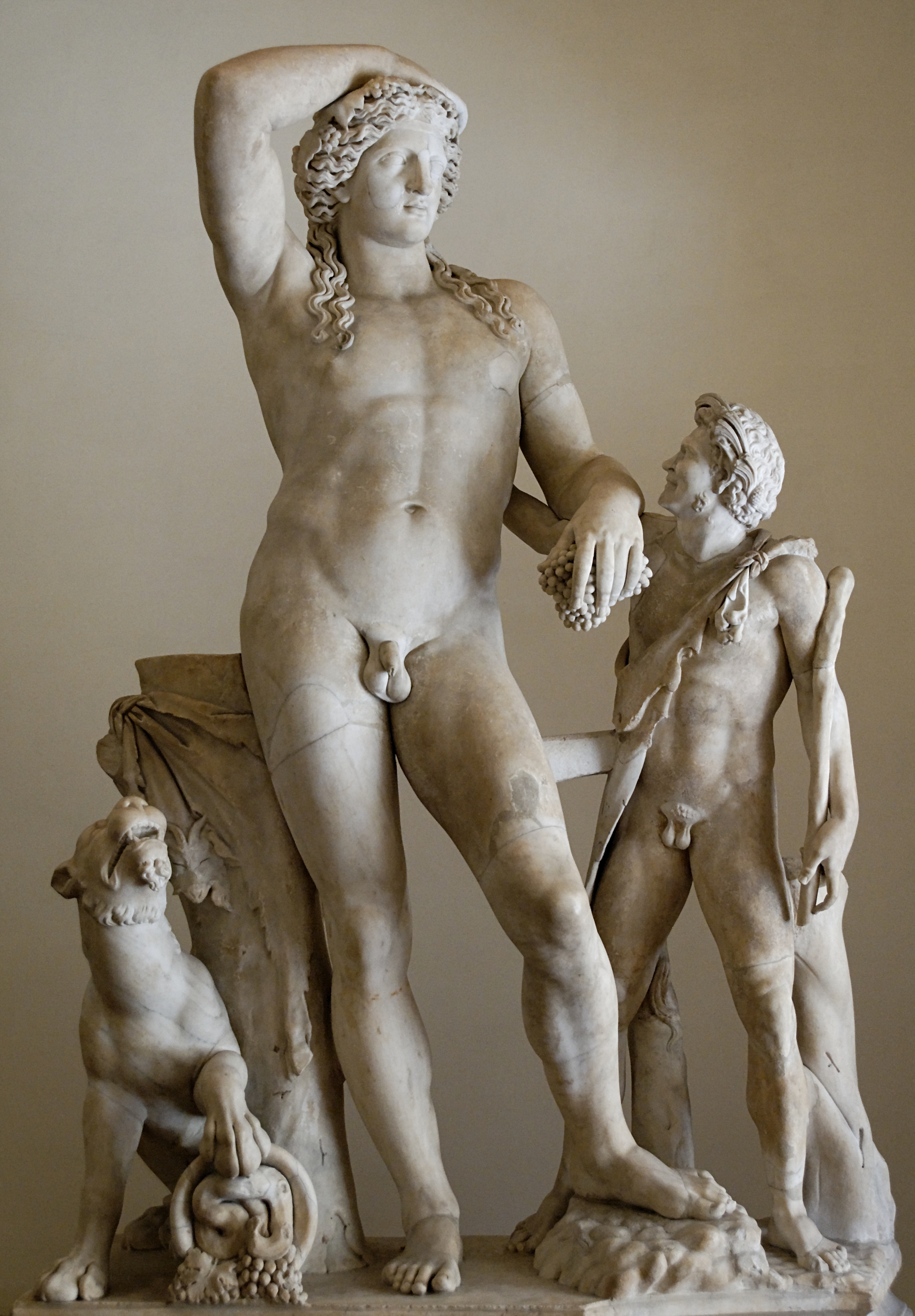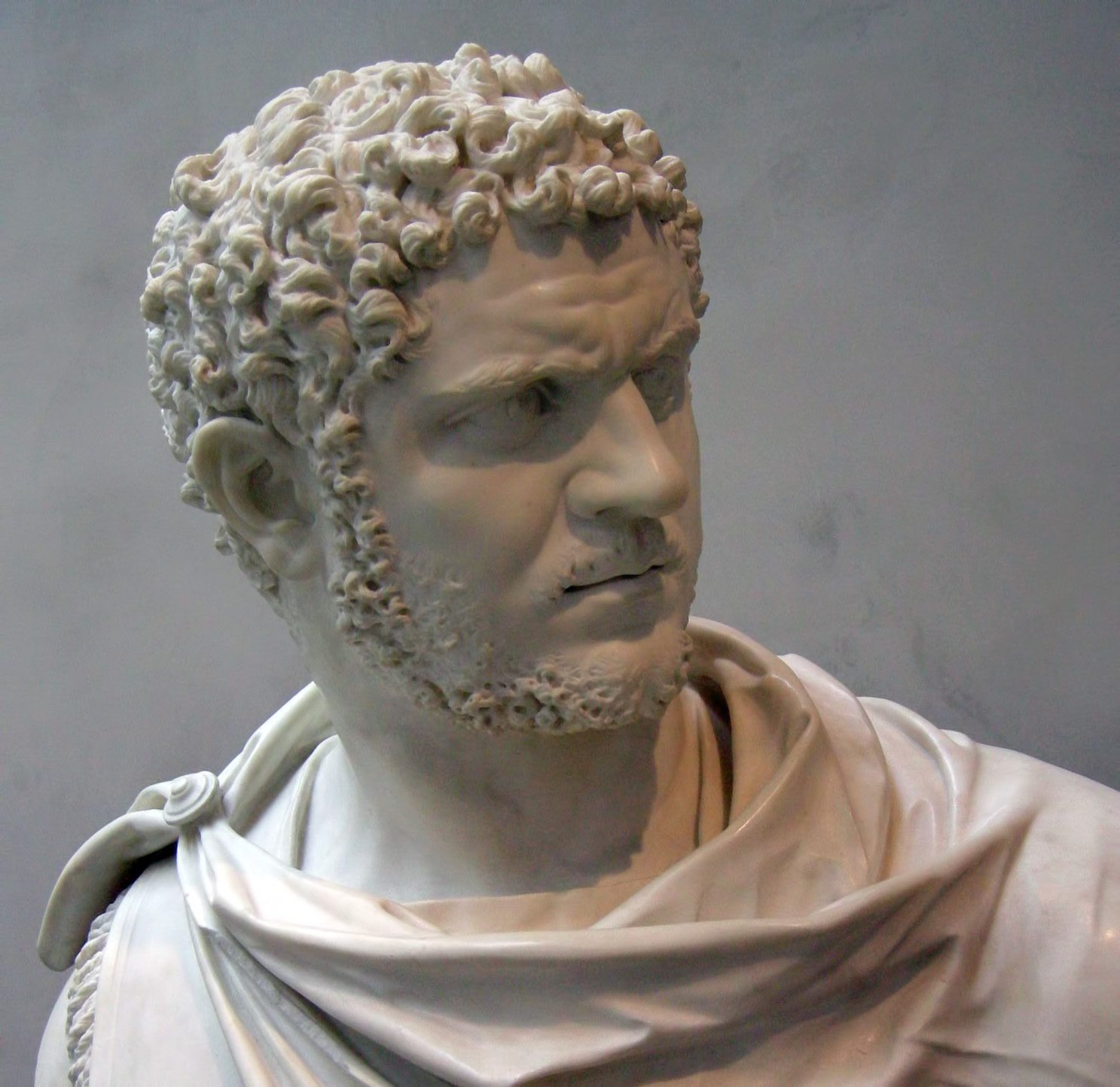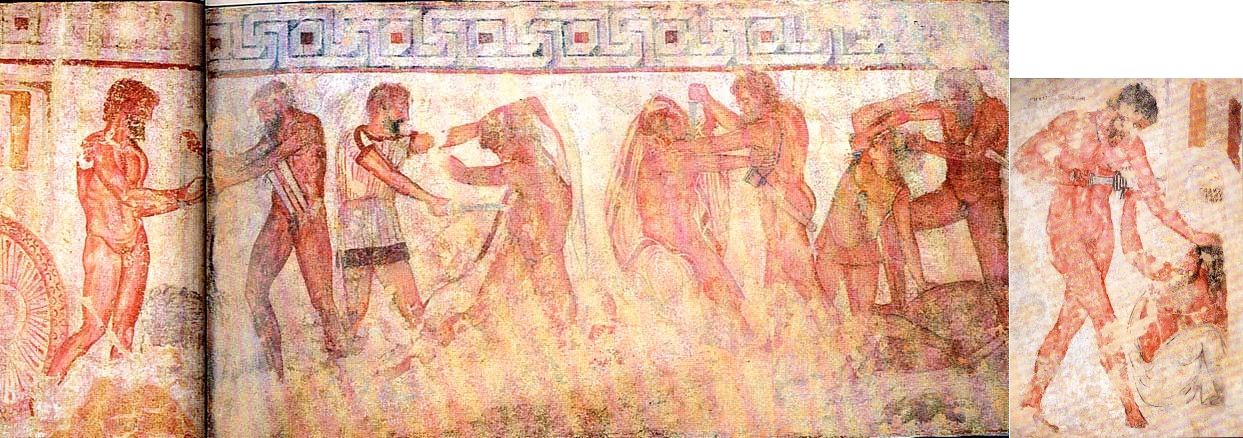|
Antoninus Caracalla
Marcus Aurelius Antoninus (born Lucius Septimius Bassianus, 4 April 188 – 8 April 217), better known by his nickname "Caracalla" () was Roman emperor from 198 to 217. He was a member of the Severan dynasty, the elder son of Emperor Septimius Severus and Empress Julia Domna. Proclaimed co-ruler by his father in 198, he reigned jointly with his brother Geta (emperor), Geta, co-emperor from 209, after their father's death in 211. His brother was murdered by the Praetorian Guard later that year, under orders from Caracalla himself, who then reigned afterwards as sole ruler of the Roman Empire. Caracalla found administration to be mundane, leaving those responsibilities to his mother. Caracalla's reign featured domestic instability and external invasions by the Germanic peoples. Caracalla's reign became notable for the Antonine Constitution ( la, Constitutio Antoniniana), also known as the Edict of Caracalla, which granted Roman citizenship to all Peregrinus (Roman), free m ... [...More Info...] [...Related Items...] OR: [Wikipedia] [Google] [Baidu] |
Museo Nazionale Romano
The National Roman Museum (Italian: ''Museo Nazionale Romano'') is a museum, with several branches in separate buildings throughout the city of Rome, Italy. It shows exhibits from the pre- and early history of Rome, with a focus on archaeological findings from the period of Ancient Rome. History Founded in 1889 and inaugurated in 1890, the museum's first aim was to collect and exhibit archaeologic materials unearthed during the excavations after the union of Rome with the Kingdom of Italy. The initial core of its collection originated from the Kircherian Museum, archaeologic works assembled by the antiquarian and Jesuit priest, Athanasius Kircher, which previously had been housed within the Jesuit complex of Sant'Ignazio. The collection was appropriated by the state in 1874, after the suppression of the Society of Jesus. Renamed initially as the Royal Museum, the collection was intended to be moved to a ''Museo Tiberino'' (Tiberine Museum), which was never completed. In 1901 the ... [...More Info...] [...Related Items...] OR: [Wikipedia] [Google] [Baidu] |
Praetorian Guard
The Praetorian Guard (Latin: ''cohortēs praetōriae'') was a unit of the Imperial Roman army that served as personal bodyguards and intelligence agents for the Roman emperors. During the Roman Republic, the Praetorian Guard were an escort for high-rank political officials ( senators and procurators) and were bodyguards for the senior officers of the Roman legions. In 27 BC, after Rome's transition from republic to empire, the first emperor of Rome, Augustus, designated the Praetorians as his personal security escort. For three centuries, the guards of the Roman emperor were also known for their palace intrigues, by which influence upon imperial politics the Praetorians could overthrow an emperor and then proclaim his successor as the new ''caesar'' of Rome. In AD 312, Constantine the Great disbanded the and destroyed their barracks at the Castra Praetoria. In the Roman Republic In the period of the Roman Republic (509–27 BC) the Praetorian Guard originated as bodyguards ... [...More Info...] [...Related Items...] OR: [Wikipedia] [Google] [Baidu] |
Herodian
Herodian or Herodianus ( el, Ἡρωδιανός) of Syria, sometimes referred to as "Herodian of Antioch" (c. 170 – c. 240), was a minor Roman civil servant who wrote a colourful history in Greek titled ''History of the Empire from the Death of Marcus'' (τῆς μετὰ Μάρκον βασιλείας ἱστορία) in eight books covering the years 180 to 238. His work is not entirely reliable although his less biased account of Elagabalus is more useful than that of Cassius Dio. Herodian himself may have been a Syrian (perhaps from Antioch) who appears to have lived for a considerable period of time in Rome, but possibly without holding any public office. From his extant work, we gather that he was still living at an advanced age during the reign of Gordianus III, who ascended the throne in 238. Beyond this, nothing is known of his life. Herodian writes (1.1.3; 2.15.7) that the events described in his history occurred during his lifetime. Photius (Codex 99) gives an out ... [...More Info...] [...Related Items...] OR: [Wikipedia] [Google] [Baidu] |
Cassius Dio
Lucius Cassius Dio (), also known as Dio Cassius ( ), was a Roman historian and senator of maternal Greek origin. He published 80 volumes of the history on ancient Rome, beginning with the arrival of Aeneas in Italy. The volumes documented the subsequent founding of Rome (753 BC), the formation of the Republic (509 BC), and the creation of the Empire (27 BC), up until 229 AD. Written in Ancient Greek over 22 years, Dio's work covers approximately 1,000 years of history. Many of his 80 books have survived intact, or as fragments, providing modern scholars with a detailed perspective on Roman history. Biography Lucius Cassius Dio was the son of Cassius Apronianus, a Roman senator and member of the gens Cassia, who was born and raised at Nicaea in Bithynia. Byzantine tradition maintains that Dio's mother was the daughter or sister of the Greek orator and philosopher, Dio Chrysostom; however, this relationship has been disputed. Although Dio was a Roman citizen, he wrote in Gree ... [...More Info...] [...Related Items...] OR: [Wikipedia] [Google] [Baidu] |
Parthian War Of Caracalla
The Parthian war of Caracalla was an unsuccessful campaign by the Roman Empire under Caracalla against the Parthian Empire in 216–17 AD. It was the climax of a four-year period, starting in 213, when Caracalla pursued a lengthy campaign in central and eastern Europe and the Near East. After intervening to overthrow rulers in client kingdoms adjoining Parthia, he invaded in 216 using an abortive wedding proposal to the Parthian king Artabanus's daughter as a ''casus belli''. His forces carried out a campaign of massacres in the northern regions of the Parthian Empire before withdrawing to Asia Minor, where he was assassinated in April 217. The war was ended the following year after Parthian victory at the Battle of Nisibis, with the Romans paying a huge sum of war reparations to the Parthians. Events leading up to the war In the years immediately before the war, Parthia was roiled by a conflict between the two sons of King Vologases V. Vologases VI succeeded his father in 208 ... [...More Info...] [...Related Items...] OR: [Wikipedia] [Google] [Baidu] |
Denarius
The denarius (, dēnāriī ) was the standard Roman silver coin from its introduction in the Second Punic War to the reign of Gordian III (AD 238–244), when it was gradually replaced by the antoninianus. It continued to be minted in very small quantities, likely for ceremonial purposes, until and through the Tetrarchy (293–313). The word ''dēnārius'' is derived from the Latin ''dēnī'' "containing ten", as its value was originally of 10 assēs.Its value was increased to 16 assēs in the middle of the 2nd century BC. The word for "money" descends from it in Italian (''denaro''), Slovene (''denar''), Portuguese (''dinheiro''), and Spanish (''dinero''). Its name also survives in the dinar currency. Its symbol is represented in Unicode as 𐆖 (U+10196), a numeral monogram that appeared on the obverse in the Republican period, denoting the 10 asses ("X") to 1 denarius ("I") conversion rate. However it can also be represented as X̶ (capital letter X with combining long ... [...More Info...] [...Related Items...] OR: [Wikipedia] [Google] [Baidu] |
Antoninianus
The ''antoninianus'' or pre-reform radiate, was a coin used during the Roman Empire thought to have been valued at 2 denarii. It was initially silver, but was slowly debased to bronze with a minimal silver content. The coin was introduced by Caracalla in early 215 AD. It was silver, similar to the denarius except that it was slightly larger and featured the emperor wearing a radiate crown, indicating it was a double denomination. Antoniniani depicting women (usually the emperor's wife) featured the bust resting upon a crescent moon. Even at its introduction, the silver content of the antoninianus was only equal to 1.5 denarii. This created inflation: people rapidly hoarded the denarii (Gresham's law), while both buyers and sellers recognized the new coin had a lower intrinsic value and elevated their prices to compensate. Silver bullion supplies began running short because the Roman Empire was no longer conquering new territory, the Iberian silver mines had been e ... [...More Info...] [...Related Items...] OR: [Wikipedia] [Google] [Baidu] |
Baths Of Caracalla
The Baths of Caracalla ( it, Terme di Caracalla) in Rome, Italy, were the city's second largest Ancient Rome, Roman public baths, or ''thermae'', after the Baths of Diocletian. The baths were likely built between AD 212 (or 211) and 216/217, during the reigns of emperors Septimius Severus and Caracalla. They were in operation until the 530s and then fell into disuse and ruin. Both during and since their operation as baths, they served as inspiration for many other notable buildings, ancient and modern, such as the Baths of Diocletian, the Basilica of Maxentius, the original Pennsylvania Station (1910–1963), Pennsylvania Station in New York City, Chicago Union Station and the Senate of Canada Building. Artworks recovered from the ruins include famous sculptures such as the ''Farnese Bull'' and the ''Farnese Hercules''. Today the Baths of Caracalla are a tourist attraction. History Construction Construction of the baths was probably initiated by emperor Septimius Severus an ... [...More Info...] [...Related Items...] OR: [Wikipedia] [Google] [Baidu] |
Roman Naming Conventions
Over the course of some fourteen centuries, the Romans and other peoples of Italy employed a system of nomenclature that differed from that used by other cultures of Europe and the Mediterranean Sea, consisting of a combination of personal and family names. Although conventionally referred to as the ''tria nomina'', the combination of praenomen, nomen, and cognomen that have come to be regarded as the basic elements of the Roman name in fact represent a continuous process of development, from at least the seventh century BC to the end of the seventh century AD. The names that developed as part of this system became a defining characteristic of Roman civilization, and although the system itself vanished during the Early Middle Ages, the names themselves exerted a profound influence on the development of European naming practices, and many continue to survive in modern languages. Overview The distinguishing feature of Roman nomenclature was the use of both personal names and regular ... [...More Info...] [...Related Items...] OR: [Wikipedia] [Google] [Baidu] |
Praenomen
The ''praenomen'' (; plural: ''praenomina'') was a personal name chosen by the parents of a Roman child. It was first bestowed on the ''dies lustricus'' (day of lustration), the eighth day after the birth of a girl, or the ninth day after the birth of a boy. The praenomen would then be formally conferred a second time when girls married, or when boys assumed the '' toga virilis'' upon reaching manhood. Although it was the oldest of the ''tria nomina'' commonly used in Roman naming conventions, by the late republic, most praenomina were so common that most people were called by their praenomina only by family or close friends. For this reason, although they continued to be used, praenomina gradually disappeared from public records during imperial times. Although both men and women received praenomina, women's praenomina were frequently ignored, and they were gradually abandoned by many Roman families, though they continued to be used in some families and in the countryside. Backgr ... [...More Info...] [...Related Items...] OR: [Wikipedia] [Google] [Baidu] |
Peregrinus (Roman)
In the early Roman Empire, from 30 BC to AD 212, a ''peregrinus'' (Latin: ) was a free provincial subject of the Empire who was not a Roman citizen. ''Peregrini'' constituted the vast majority of the Empire's inhabitants in the 1st and 2nd centuries AD. In AD 212, all free inhabitants of the Empire were granted citizenship by the ''Constitutio Antoniniana'', with the exception of the ''dediticii'', people who had become subject to Rome through surrender in war, and freed slaves.Giessen Papyrus, 40,7-9 "I grant to all the inhabitants of the Empire the Roman citizenship and no one remains outside a civitas, with the exception of the dediticii" The Latin '' peregrinus'' "foreigner, one from abroad" is related to the Latin adverb ''peregre'' "abroad", composed of ''per-'' "through" and an assimilated form of ''ager'' "field, country", i.e., "over the lands"; the ''-e'' () is an adverbial suffix. During the Roman Republic, the term ''peregrinus'' simply denoted any person who did not h ... [...More Info...] [...Related Items...] OR: [Wikipedia] [Google] [Baidu] |
Roman Citizenship
Citizenship in ancient Rome (Latin: ''civitas'') was a privileged political and legal status afforded to free individuals with respect to laws, property, and governance. Citizenship in Ancient Rome was complex and based upon many different laws, traditions, and cultural practices. There existed several different types of citizenship, determined by one's gender, class, and political affiliations, and the exact duties or expectations of a citizen varied throughout the history of the Roman Empire. History The oldest document currently available that details the rights of citizenship is the Twelve Tables, ratified c. 449 BC. Much of the text of the Tables only exists in fragments, but during the time of Ancient Rome the Tables would be displayed in full in the Roman Forum for all to see. The Tables detail the rights of citizens in dealing with court proceedings, property, inheritance, death, and (in the case of women) public behavior. Under the Roman Republic, the government conducte ... [...More Info...] [...Related Items...] OR: [Wikipedia] [Google] [Baidu] |








